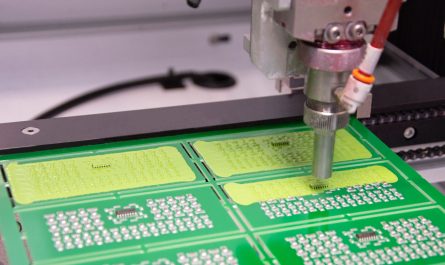What is Latex Coating?
Latex coating, sometimes referred to as latex paint, is a water-based protective paint that contains natural or synthetic polymers in the form of an emulsion. The term “latex” refers to the aqueous dispersion (emulsion) of polymer microparticles in water that is used as a basic binder for the paint. Latex coating provides an easy-to-apply, durable, and washable surface for walls, ceilings, woodwork, and more.
Composition and Properties
The key ingredients in Latex Coating include water, latex binders, pigments or colorants, and various additives. The water acts as the carrier while the synthetic or natural rubber latex acts as the binder that holds the paint film together. Common latex binders include acrylics, vinyl acrylics, and styrene acrylics which provide the paint with superior adhesion, flexibility, and durability properties. Inert pigments and minerals are used to provide color and hiding power. Additives enhance the paint’s functionality and lifespan.
Some key properties of latex coating include:
Water-based: Environmentally-friendly as it contains low or no volatile organic compounds (VOCs).
Washability: Withstands repeated washing without damage due to flexibility of latex binders.
Adhesion: Strongly adheres to surfaces like wood, metal, drywall, and concrete.
Durability: Resists cracking, peeling, and yellowing for years when adequately maintained.
Fast-drying: Dries quickly to the touch within 1 hour and can be recoat in 4 hours.
Low odor: Does not have strong paint smells during and after application.
Applications of Latex Coating
Due to its versatile properties, latex coating has wide applications for both indoor and outdoor surfaces:
Interior Applications
Walls: Most common interior application due to washability, durability and availability in a vast range of colors.
Ceilings: Provides a bright, uniform colored surface with a velvety texture.
Woodwork: Allows natural grain of wood to show through while protecting it from damage.
Bathrooms: Ideal for high-moisture areas due to resistance to moisture and mildew.
Kitchens: Stands up to occasional splashes and cleans easily with soap and water.
Exterior Applications
Siding: Used on wood, vinyl, and aluminum siding for a bright colored facade.
Fences and Decks: Protects outdoor wood structures from weathering, cracking and rotting.
Garage Doors: Provides an attractive, low-maintenance surface that holds up against the elements.
Roofs: Offers limited protection and extends the lifespan of asphalt roof shingles.
Benefits of Using Latex Coating
Here are some key benefits of using latex paint for interior and exterior surfaces:
Durability: Outlasts other paint types and protects surfaces for 5-10 years with proper care and maintenance.
Washability: Withstands repeated washing and scrubbing without damage, making it suitable for high-traffic areas.
Low VOC: Environmental-friendly with little to no emissions of volatile organic compounds.
Breathability: Allows trapped air and moisture to pass through, preventing blistering and peeling.
Flexibility: Remains flexible over changes in temperature and humidity to avoid cracking.
Stain Resistance: Repels water, marks, and resist incidental contact from chemicals, food and drinks.
Affordability: Provides a smooth, long-lasting finish at a lower cost compared to enamel paints.
Ease of Application: Can be applied using natural or synthetic bristle brushes, rollers, or sprayers with minimal effort.
Surface Preparation for Latex Coating
Proper surface preparation is essential for latex paint to adhere well and last longer. The following steps should be followed:
Cleaning: Remove all dirt, grease, chalk, mildew and other contaminants using appropriate cleaning solutions.
Sanding: For new surfaces, sand lightly with fine-grit sandpaper to create tooth for better bonding.
Filling: Use wood filler, caulk or joint compound to fill cracks, holes and uneven areas for a smooth base.
Priming: Apply primer, especially on bare wood and metal, to promote adhesion and hide stains.
Conditioning: Let new plaster, concrete and putty dry completely before painting for moisture-free surfaces.
De-glossing: Sand glossy surfaces to create an irregular profile for paint hold.
Factors Affecting Coating Performance
Several factors influence how long the latex coating will last:
Site conditions: Coatings perform differently based on climate extreme heat, cold or humidity can affect longevity.
Surface type: Some surfaces like wood are more porous than others and need more frequent re-coating.
Number of coats: Applying two coats versus one improves hiding power and extends the coating life.
Proper application: Even application without over-brushing leads to uniform thickness and coverage.
Maintenance: Regular cleaning and touch-ups protect against premature damage from environmental factors.
UV exposure: Direct sun exposure can cause latex paint to fade more quickly on south-facing walls.
Manufacturing quality: Cheaper paints use fillers and binders that degrade fast compared to premium coatings.
With recommended preparation and application methods along with periodic maintenance, latex coating can typically last for 5-10 years on interior and 2-5 years on exterior surfaces. Following the manufacturer’s guidance ensures harnessing its full protective capabilities.
Latex coating has proven to be one of the most popular and versatile surface coating materials due to its ease of application, durability, washability, low odor and affordability. Applied correctly on properly prepared surfaces, it protects walls, woodwork, fixtures and more from damage caused by abrasion, moisture, stains, and weathering. Its environment-friendly, non-toxic nature adds to its appeal for residential and commercial projects alike. With basic precautions during usage and periodic touch-ups, latex paint enhances surroundings while withstanding rigorous day-to-day use for several years.
*Note:
1. Source: Coherent Market Insights, Public sources, Desk research.
2. We have leveraged AI tools to mine information and compile it.




